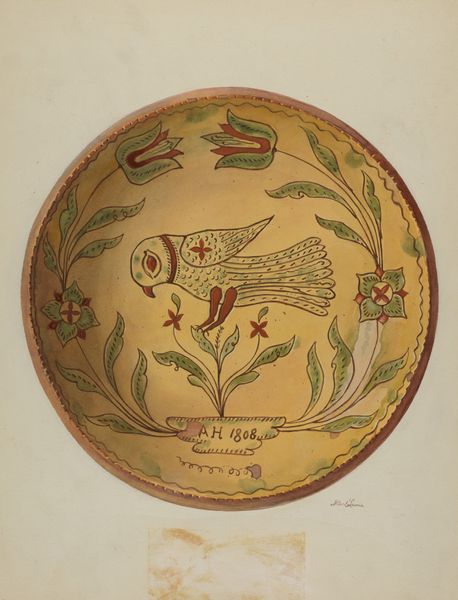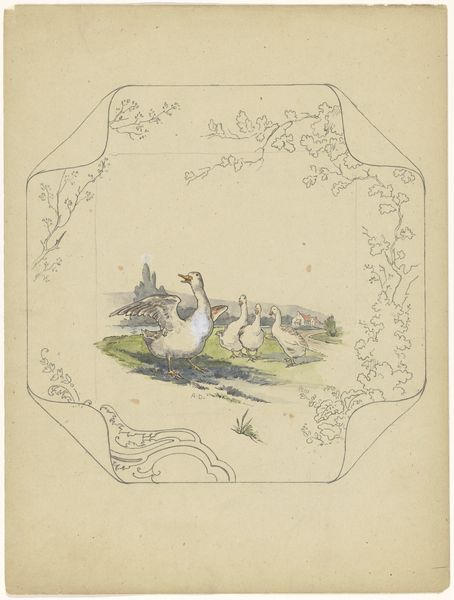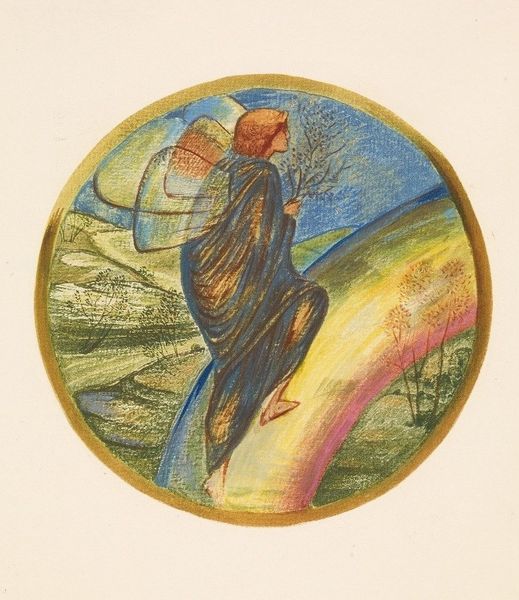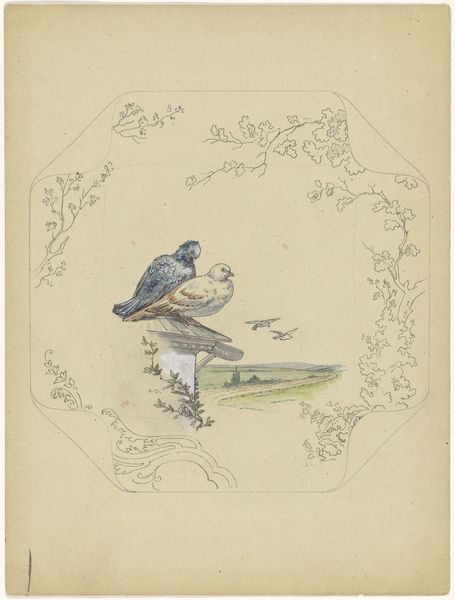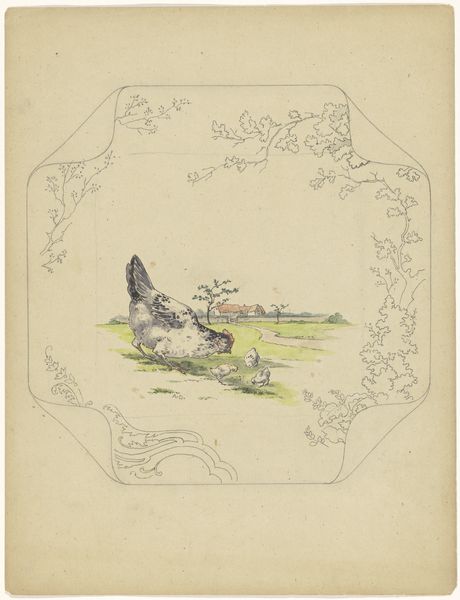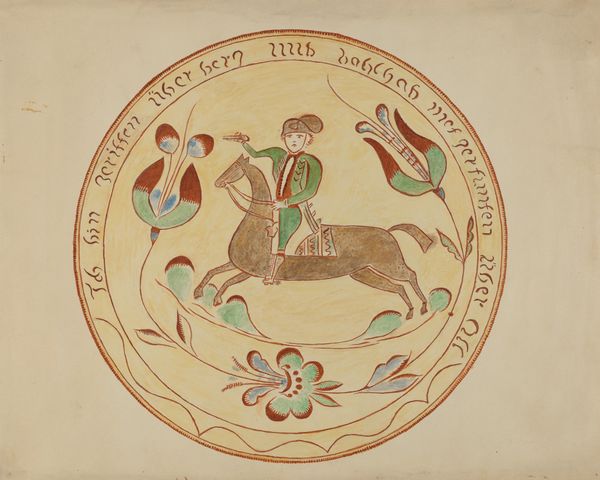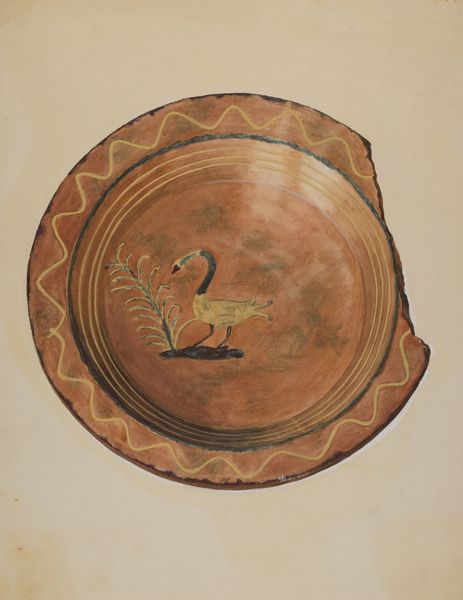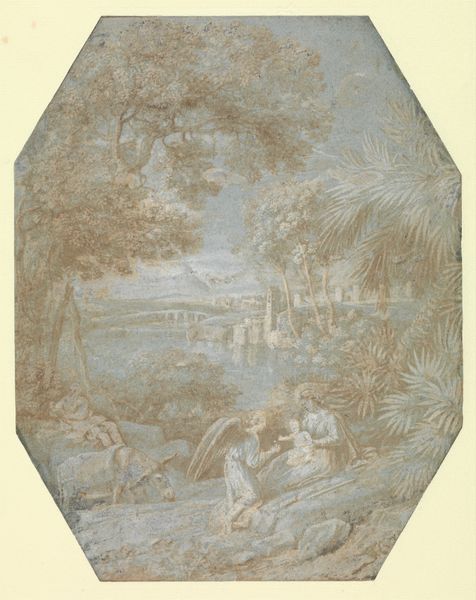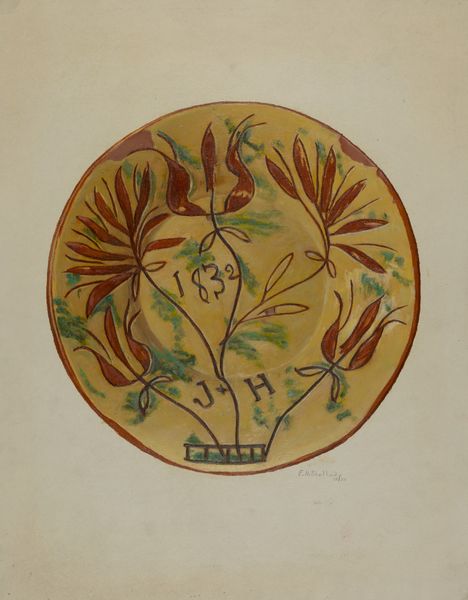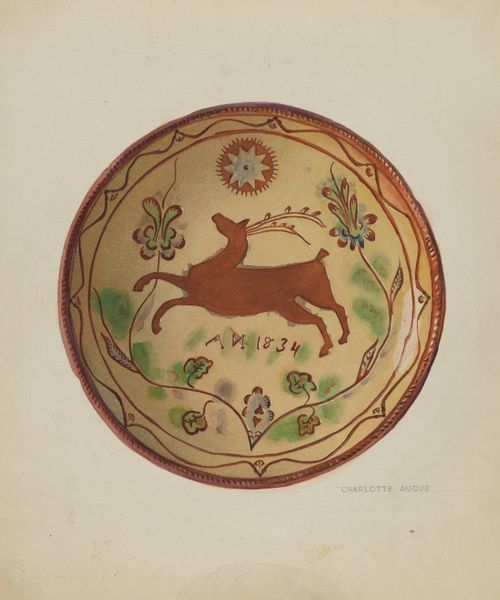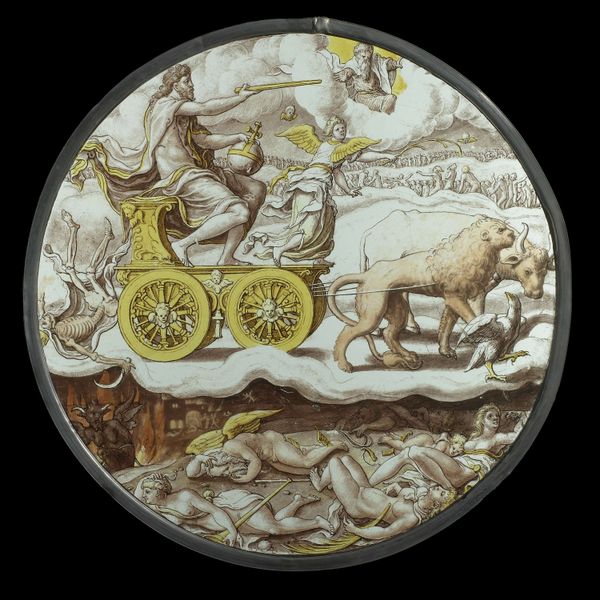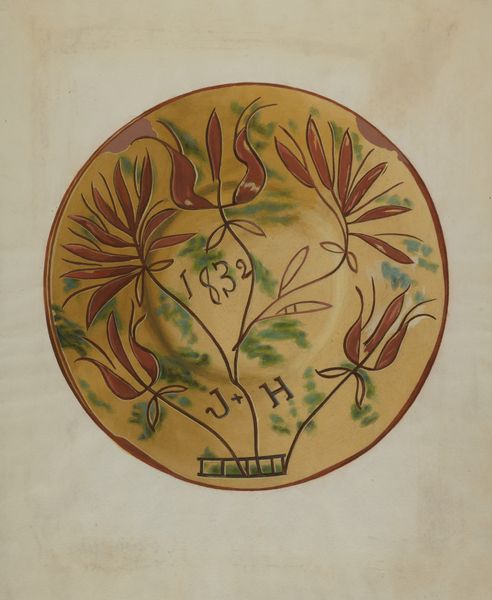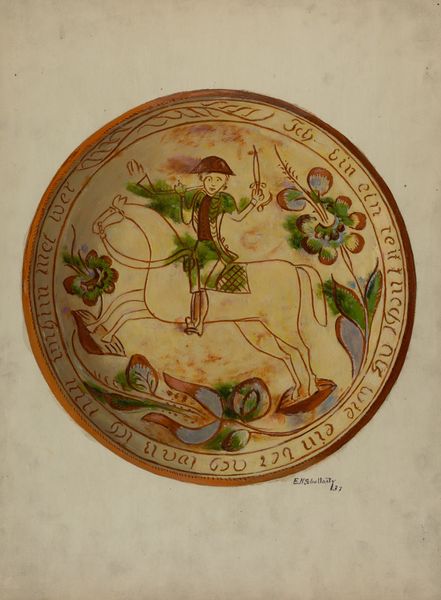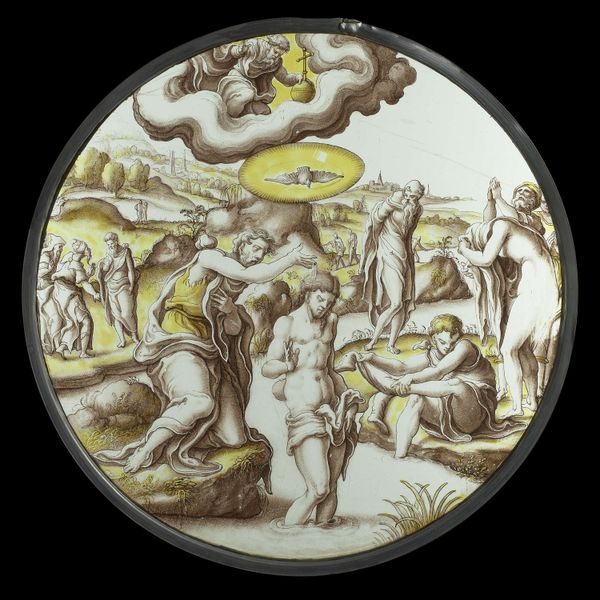
Græssende køer og skræppende gæs (udkast til keramisk fad) 1893
0:00
0:00
Dimensions: 205 mm (None) (None)
Editor: Here we have Theodor Philipsen’s "Grazing Cows and Cawing Geese (Sketch for a Ceramic Dish)" from 1893, rendered with colored pencil and watercolor on earthenware. There’s such a flurry of geese taking center stage, and they contrast sharply with the calmer, more muted cows. What draws your attention most in this piece? Curator: It's fascinating how Philipsen uses this seemingly idyllic pastoral scene to subtly address power dynamics. Look at how the geese are positioned – almost confrontational, a collective seemingly guarding their territory. The cows in the background are placid, perhaps symbolic of a complacent, unquestioning segment of society. How might we interpret this through a lens of social class or perhaps even early feminist theory, considering the goose as a traditionally female symbol of domesticity asserting itself? Editor: I never considered the geese as being confrontational. I was too busy seeing the idyllic and the farm animals. But now that you point that out, they do seem ready to cause some trouble. Curator: Exactly! And remember, Philipsen was painting during a period of intense social and political upheaval in Europe. Art became a space where those tensions were explored, sometimes overtly, sometimes with nuanced symbolism. Perhaps this dish, meant for the home, was also intended as a conversation starter, a gentle prod to question the status quo? Do you think the placement of the geese right up front emphasizes any sort of importance of their symbolic value? Editor: It makes you wonder who might be eating off this dish, and what conversations it might start. So the image acts almost as a visual metaphor, prompting reflection on the power structures within society at the time. Curator: Precisely. And it reminds us that even the most seemingly harmless domestic objects can be imbued with layers of meaning, prompting us to consider art as a reflection of—and a challenge to—prevailing social norms. Editor: Thanks, that's really given me a new perspective on how to look at this kind of artwork.
Comments
No comments
Be the first to comment and join the conversation on the ultimate creative platform.
